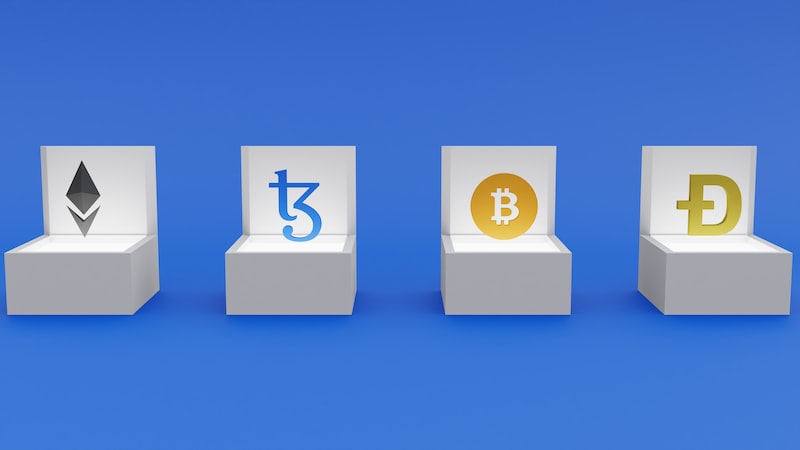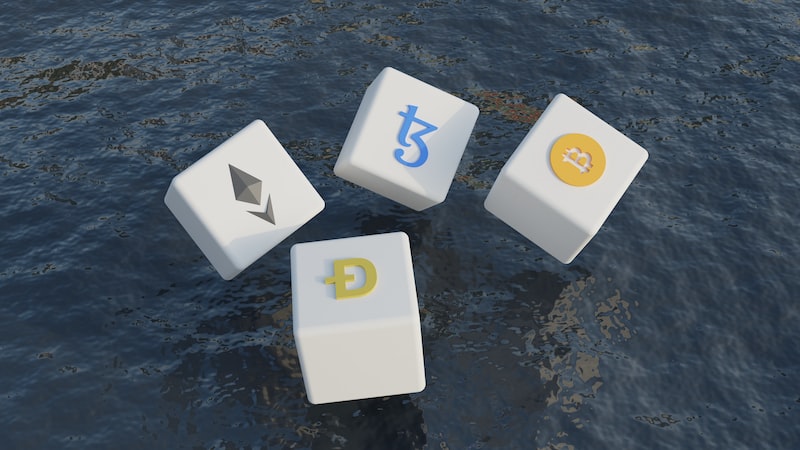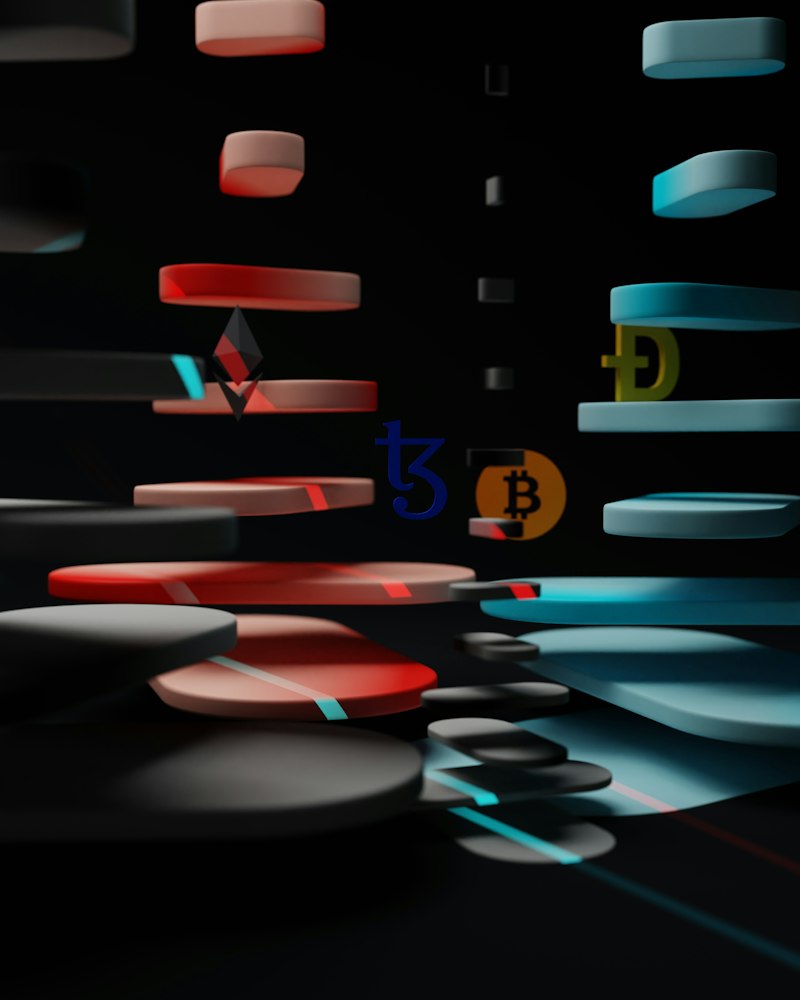Table of Contents
Have you ever wondered about the buzz surrounding non-fungible tokens, or NFTs? In this article, we will dive into the fascinating world of NFTs and unravel their meaning. So, let’s embark on this journey together and decode the captivating realm of non-fungible tokens.
At its core, an NFT is a unique digital asset that represents ownership or proof of authenticity for a particular item, whether it’s artwork, music, videos, virtual real estate, or even tweets. Unlike cryptocurrencies such as Bitcoin or Ethereum, which are fungible and can be exchanged on a one-to-one basis, NFTs are one-of-a-kind and cannot be replaced or replicated.
Think of NFTs as digital certificates of authenticity. They utilize blockchain technology, which ensures transparency, security, and immutability. Each NFT contains metadata that provides detailed information about its origin, creator, and ownership history. This information is permanently recorded on the blockchain, making it tamper-proof and easily verifiable.
The advent of NFTs has revolutionized various industries, particularly the art world. Artists now have a direct way to monetize their digital creations without relying solely on traditional galleries or intermediaries. Moreover, NFTs enable creators to retain more control over their work, including the ability to receive royalties whenever the NFT is sold or traded in the future.
But why are people so fascinated by NFTs? Well, one reason is the sense of exclusivity and rarity they provide. Owning a unique piece of digital art or a limited-edition collectible can be incredibly appealing and prestigious. Additionally, NFTs offer new possibilities for fan engagement and interaction, allowing enthusiasts to connect with their favorite artists and brands in unprecedented ways.
As NFTs continue to gain traction, their influence extends beyond the art world. Musicians, athletes, and even major corporations are exploring the potential of NFTs to create new revenue streams and enhance fan experiences. From virtual concerts to digital merchandise, the possibilities are virtually endless.
non-fungible tokens are disrupting the digital landscape by introducing a new paradigm for ownership and authenticity in the digital realm. With their unique nature and blockchain-backed security, NFTs empower creators, collectors, and enthusiasts alike. So, keep an eye on this exciting space as it continues to evolve and unlock incredible opportunities for artists and innovators worldwide.
From Digital Art to Virtual Real Estate: Unraveling the World of NFTs
In today’s digital age, a fascinating new phenomenon has emerged that is revolutionizing the art and technology industries alike: Non-Fungible Tokens (NFTs). These unique digital assets have captured the attention of artists, collectors, and investors around the globe. Let’s delve into the captivating world of NFTs and explore how they have transformed the way we perceive and trade digital art and virtual real estate.
NFTs are tokenized representations of digital content that reside on a blockchain, typically using Ethereum as the underlying technology. Unlike cryptocurrencies such as Bitcoin or Ethereum, which are interchangeable with one another, NFTs possess distinct characteristics that make them one-of-a-kind and irreplaceable. Each NFT holds a unique digital signature, providing proof of ownership and authenticity.

One of the most exciting applications of NFTs is within the realm of digital art. Artists can now create and sell their artwork directly as NFTs, allowing for increased visibility and control over their creations. With NFTs, artists can attach specific details, such as edition numbers or unlockable content, making each piece truly unique. This newfound digital medium enables artists to reach a global audience, bypassing traditional art institutions and galleries, and receiving direct support from collectors and enthusiasts.
But NFTs don’t stop at digital art alone. They have expanded into the world of virtual real estate, where digital landscapes and virtual experiences hold tremendous value. Virtual worlds like Decentraland and The Sandbox allow users to buy, sell, and trade virtual land and properties using NFTs. Just as physical real estate has long been regarded as a valuable asset, virtual real estate presents a new frontier for investment and self-expression.
Investors have also flocked to the world of NFTs, recognizing the potential for significant returns. The scarcity and uniqueness of NFTs make them highly sought after, driving prices to astonishing heights. Celebrities, musicians, and athletes have joined the NFT craze, creating their own digital collectibles and engaging directly with their fans in exciting new ways.
NFTs have sparked a revolution in the realms of digital art and virtual real estate. They have empowered artists, transformed the way we perceive and trade digital assets, and opened up a world of possibilities for creators and investors alike. As this technology continues to evolve and mature, it will be captivating to witness how NFTs shape the future of art, technology, and ownership in our increasingly digital world.
NFTs: Unlocking the Value of Authenticity in the Digital Age
In the fast-paced digital age, a new phenomenon has taken the world by storm: NFTs, or Non-Fungible Tokens. These unique digital assets have revolutionized the way we think about ownership and authenticity in the virtual realm. But what exactly are NFTs, and how do they unlock the value of authenticity?
Imagine owning a rare piece of artwork, a one-of-a-kind item that sets you apart from the crowd. That’s precisely what NFTs offer in the digital space. Unlike cryptocurrencies such as Bitcoin or Ethereum, which are fungible and can be exchanged on a like-for-like basis, NFTs represent something unique, indivisible, and irreplaceable. They can come in various forms, including digital art, music, videos, and even virtual real estate.
At the heart of NFTs lies blockchain technology, which provides an immutable record of ownership and verifies the authenticity of each token. By leveraging this decentralized ledger system, creators can prove that their digital creations are original and scarce, giving them unparalleled value. This authenticity is a game-changer for artists, musicians, and content creators who can now monetize their work directly, without intermediaries.
Moreover, NFTs empower collectors and enthusiasts to support their favorite creators by purchasing and owning their exclusive digital assets. The ownership of an NFT bestows a sense of pride and prestige upon the holder, akin to owning a valuable physical artifact. It’s like having a front-row seat at a concert, a chance to own a slice of history in the digital domain.
But why are people willing to pay exorbitant sums for something that exists purely in the digital realm? The answer lies in the emotional connection and social currency that NFTs provide. Owning an NFT is not just about possessing a digital file; it’s about being part of a community, supporting artists and creators, and participating in a cultural movement. It’s the thrill of being at the forefront of innovation and expressing oneself through unique digital expressions.
The Rise of NFTs: How Non-Fungible Tokens Are Transforming Industries
Have you heard about the latest revolution in the digital world? Non-fungible tokens, or NFTs, are making waves across various industries, and their impact is truly astonishing. From art and music to gaming and collectibles, NFTs have taken center stage, disrupting traditional models and offering new possibilities for creators and consumers alike.

So, what exactly are NFTs? Unlike cryptocurrencies such as Bitcoin or Ethereum, NFTs represent unique digital assets that cannot be exchanged on a like-for-like basis. Each NFT has its own distinct characteristics and attributes, making it one-of-a-kind and irreplaceable. This uniqueness is what sets NFTs apart and allows them to hold tremendous value.
One area where NFTs have created a groundbreaking shift is in the art world. Artists can now tokenize their work, attaching ownership rights to a digital asset. This enables artists to monetize their creations directly, without relying on intermediaries like galleries or auction houses. Moreover, NFTs provide a transparent and immutable record of ownership, ensuring authenticity and provenance for buyers.
Beyond art, NFTs have also made significant strides in the music industry. Musicians can release limited edition tracks or albums as NFTs, allowing fans to own a piece of their favorite artist’s work. With NFTs, musicians can explore new revenue streams, engage with fans in innovative ways, and regain control over their content and royalties.
Another exciting sector embracing NFTs is gaming. Non-fungible tokens enable gamers to own and trade unique in-game items, characters, or virtual real estate. This not only enhances the gaming experience but also presents economic opportunities within virtual worlds. Players can accumulate rare and valuable NFTs, which can appreciate in value over time.
In addition to art, music, and gaming, NFTs are making waves in sports memorabilia, virtual fashion, digital real estate, and more. The potential applications seem boundless, as industries continue to explore the transformative power of this technology.

non-fungible tokens have emerged as a game-changer, revolutionizing industries across the board. From art to music, gaming to collectibles, NFTs offer a new paradigm that empowers creators, democratizes access, and unlocks novel opportunities for value creation. As we witness the rise of NFTs, it’s clear that we are at the forefront of a digital renaissance, where ownership, creativity, and innovation intertwine in unprecedented ways.
Demystifying NFTs: Understanding the Unique Aspect of Non-Fungible Tokens
Have you ever heard the term NFT and wondered what it actually means? In today’s digital world, NFTs have been making waves and capturing the attention of artists, collectors, and investors alike. But what exactly are these non-fungible tokens, and why are they so unique?
Let’s break it down. Unlike cryptocurrencies such as Bitcoin or Ethereum, which are fungible and can be exchanged on a one-to-one basis, NFTs are unique and cannot be exchanged on an equal basis. Each NFT represents something distinct, whether it’s a digital artwork, a video clip, a music album, or even a virtual real estate.
Think of it this way: if you have a dollar and I have a dollar, we can easily swap them without any difference in value. However, if you own an NFT that represents a limited edition artwork by a famous artist, its value is derived from its scarcity, uniqueness, and the emotional connection it holds for its owner. You can’t simply trade it for another NFT and expect them to be of equal worth.

Another intriguing aspect of NFTs is their underlying technology: blockchain. Blockchain ensures transparency, security, and immutability. Each NFT transaction is recorded on the blockchain, providing a verifiable and tamper-proof history of ownership. This not only safeguards the authenticity and provenance of digital assets but also eliminates the need for intermediaries, such as galleries or auction houses.
Moreover, NFTs open up new opportunities for creators, enabling them to monetize their work directly. Artists can sell their digital creations as NFTs, retaining ownership rights and receiving royalties whenever their art is resold. This decentralized and democratized approach empowers artists and encourages creativity in the digital space.
However, it’s essential to recognize that the NFT market is still relatively new and evolving. While some NFTs have sold for millions of dollars, others may struggle to find buyers. The value of an NFT ultimately depends on factors like scarcity, demand, and the reputation of the creator.
NFTs represent a groundbreaking innovation that merges art, technology, and ownership. Their unique nature, powered by blockchain, has revolutionized the way we perceive and trade digital assets. Whether you’re an art enthusiast, a collector, or simply curious about this emerging trend, understanding the fundamentals of NFTs will enable you to navigate this exciting landscape with confidence and appreciation for its distinctiveness.





